Missouri Science and Technology University professor reviewed ESS-S3011A
Professor David Pommerenke, one of the foremost experts in ESD research, shares his thoughts on the ESS-S3011A ESD simulator made by NoiseKen from the EMC lab in the Missouri Science and Technology University.
Please introduce yourself.
I am David Pommerenke. I am a faculty here at Missouri Science and Technology University in the EMC lab.
How long have you been here?
18 years in all in this university.
Were you in research somewhere else before?
I am German so I grew up in Berlin. I did my Masters Diploma and Ph.D. in Technical University of Berlin and after some portion, I went to California and worked at Hewlett Packard as EMC Research Engineer for 5 years in Roseville. Then we moved here. I became a faculty member.
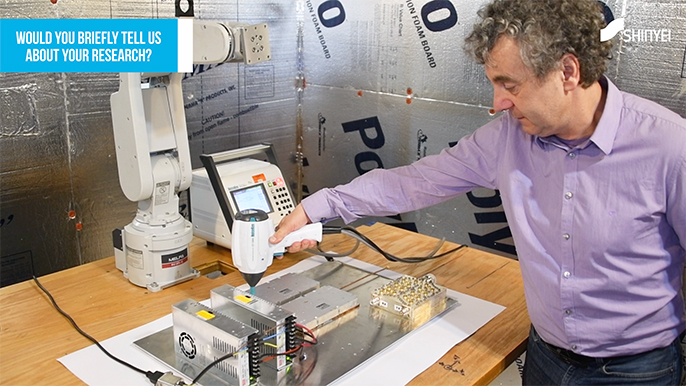
We’re here to talk about ESS 3011, the Noiseken ESD Simulator. Can you talk about the research you do here in this facility and how you incorporate this unit?
There’s a quite broad range of. I will just limit myself to ESD research. So there’s a quite broad range of ESD research done here and it usually relates to kind of three directions. One is damage or damage protection. The other is soft failure. Soft failure is basically, you discharge to a unit and then the thing crashes or gets bit errors So any response of the DUT which is not physically destructive is the soft failure. Then we do a lot of tests related to ESD testing. So testing system level testing using ESD generators or other methods and compensation of multi protection devices using transmission line pulse. So these are the three main directions.
I see a lot of noise stimulators in here. How do like them? How are they different?
We have been working with pretty much every ESD generator in the market. Sometimes we use a comparison but the core system is of the Noiseken generator. So we have three of them here and the older ones we have modified. So we have modified handheld unit to make different testing. We modified the base unit to have some voltage control which was not implemented. These are the ones that are certainly not standard anymore. We have one of them which is a new model of the standard model and what's convenient about these is that they go up to a very high voltage but the base handheld unit is light. That is basically a very nice combination. Another combination is that one that doesn’t have a full self-check but it has a let's say 50% self check using pre-check where the voltage is checked, maybe not the waveform itself. I think these are the good sides. We can remote control quite easily so it's integrated into a precision instrument;scanning systems and other scanning systems. The functionality is very robust. In other stimulators we used, we had the problem that for example remote control got disturbed by ESD and all those very special functions had to be made to remote control. So the generator has a light unit and it is reliable and goes to 30 or 35 kV and that's the main reason why we use them.
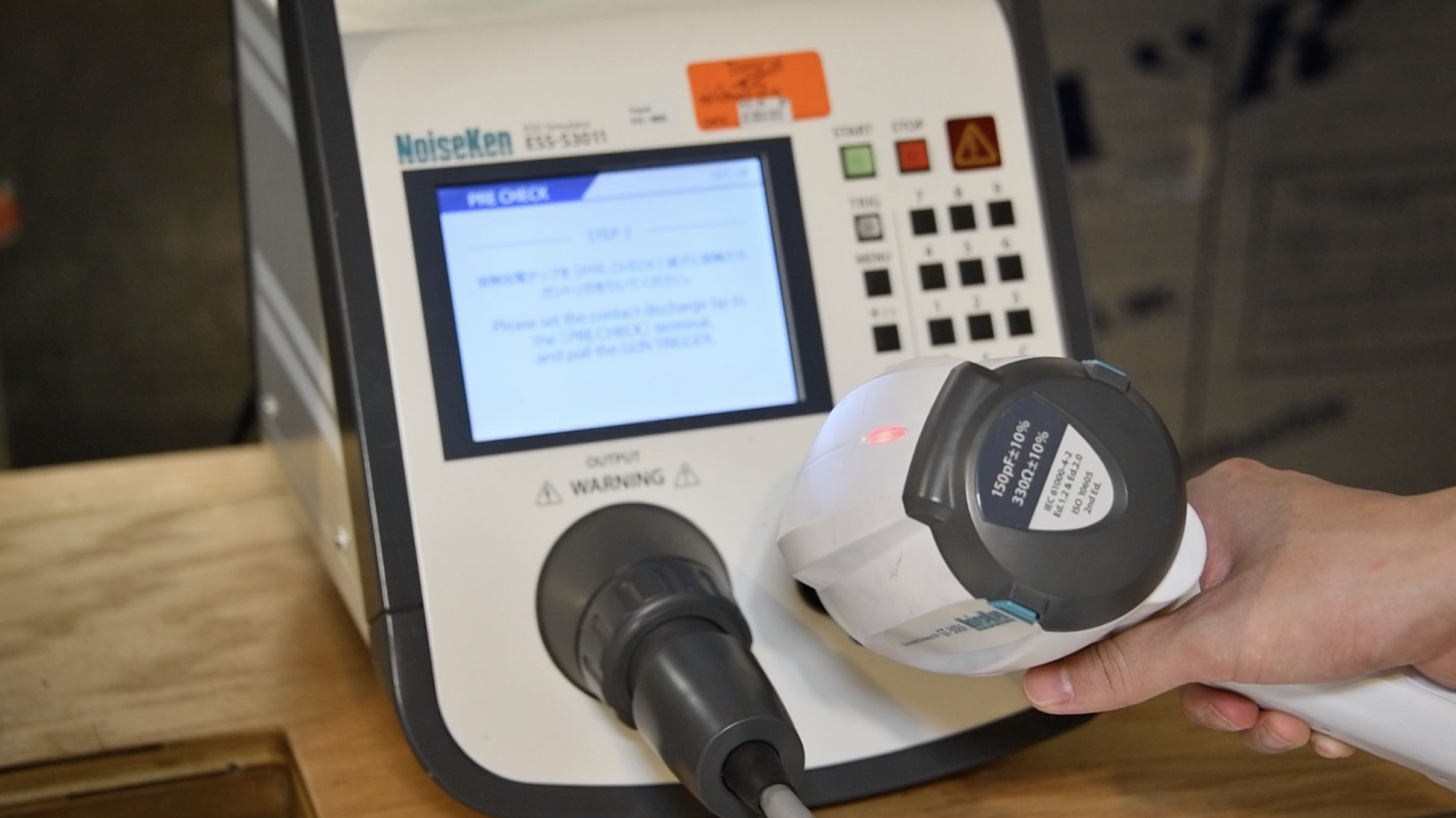
You briefly talked about the pre-check feature for the new model ESS-S3011A & GT-30RA. Then you said like a way of verification. It's not going to do that. Is that something you will be looking for in the future?
Right now ESD system level testing has the problem of bad reproducibility of results, especially in the discharge. The discharge being the spark, length for every discharge even if with the same approach varies that causes variations of the current. So one thing which I think good test houses should do, they should measure the current here. Then for every discharge, they record the current on the oscilloscope, and if a failure reports then they keep the waveform and can say at this waveform, the DUT had this reaction like it reset. In addition I think, one should have a video recording, so a good ESD labs should have the video recorded. So you bring it here, record the testing then you see that when I discharge at this angle. This is the wrong tip. Let's just say it’s air discharge. I discharge at this angle. The unit blinked and then it crashed. And this is all documented. So the reaction of the unit is documented and the current is documented. And of course if the DUT didn’t react, you don’t keep it, you just throw it away. And I have seen this system implemented with a foot pedal. You step on the foot pedal and the recording starts and if the recording is nothing to react to you tip twice on it and it deletes it. So I have seen this. And adding current measurement to an ESD generator is relatively easy to do but so far nobody has done it.
I have not seen such system in the market either. I haven't heard of that until I talked with you today.
We use the f65 current length from Fischer. It's heavy. It's expensive. $2.5 thousand or something and it changes the waveform. The wave form goes slightly out of spec. That's why the f65 current length is good at research. No problem. We don't care if we have 5% out of spec but for compliance, it’s not an unacceptable level. That's very interesting. I am very sure Noiseken is happy to hear that. Noiseken can talk to us when we nearly have finished the development of the unit.
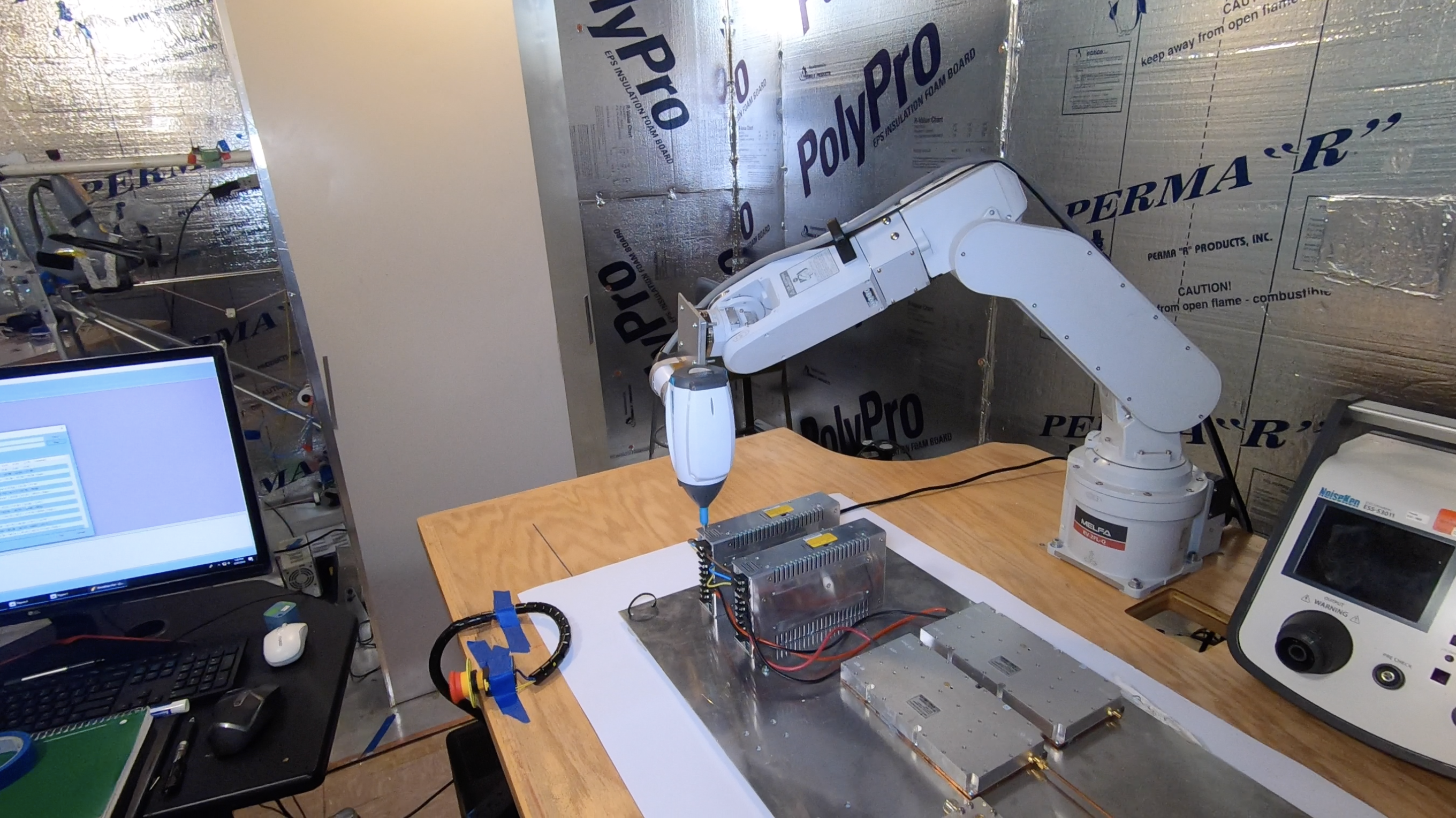
What are your future plans in your research?
I think the main directions right now is you know, because of the smaller process feature size. The diode cost or the cost per wafer goes up. So the IC manufacturers are forced to reduce ESD robustness of IC. The reason is that the ESD protection structures like diodes or snapback structures. They have a current density limit. So they have to have a certain size no matter if it’s a 7 nanometer process or 90 nanometer process. The consequence is that the robustness of the diodes goes down. For example take the USB3.1 generation 2. The robustness is only 1 amp or less. So this trend will continue. One has a more extra protection. For example for USB, the consequence of that is that one has to make a good balance between the external and internal protection. Because if you make it bad then the IC will protect the diode. But you want the diode to protect the IC. So this is all done now in simulation. It’s called seed simulation. SEED (System Efficient ESD Design). This is a very important for all IO right now. To do the simulation you need IC models, TVS models, and models of ESD generators. That's one direction from the system level of ESD research. That relates to damage. The other relates to soft failures. Right now you discharge to a laptop and the laptop crashed and you don’t know why. And you don’t know how to model that. Now we can find the root cause. We know how to do that. We know how to find which IC crashed but if you want model that, you need a soft failure model of an IC. So you need to understand if I to discharge 1 amp to 5 nanoseconds into USB the data line. Will this lead to bit errors which are self correcting, that is not a problem for users obviously, or will it lead to dismount or will it lead to that it appears some PLL fails and you have to reset the complete system. So one has to make soft failure models to understand the type of failures which occur and which level they occur. Then to make system level simulation which is full wave which contains electromagnetic coupling into the wires into the tracers, especially flex cables, and then one can somewhat predict if a soft failure will occur or not. Anyone can very well predict, let's say I change one single layer flex to one dual layer flex. How much gain I get? How much better will be the system? I think modeling full wave stimulation of soft errors and SEED are two big future directions which involve the ESD generators.
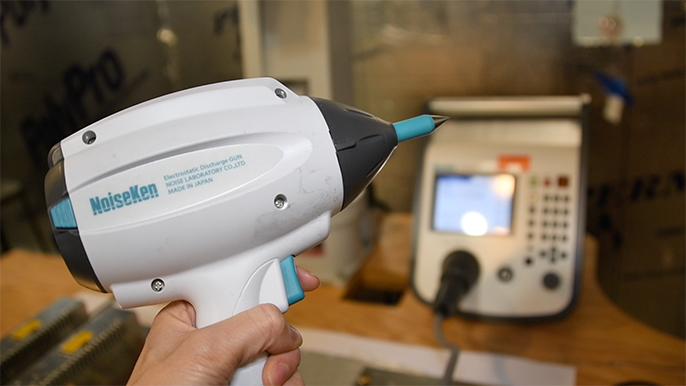
That's where I hope you can continue using the Noiseken simulator.
We know the Asian market is dominated by the Noiseken and US market is different. But Asian market everyone uses Noiseken.
We are trying to get more presence in the US.
Yeah but that more diverse but the European market is more diverse. I think there are 8 relevant manufacturers. In Germany, you will find everyone but Asia is dominated by Noiseken.
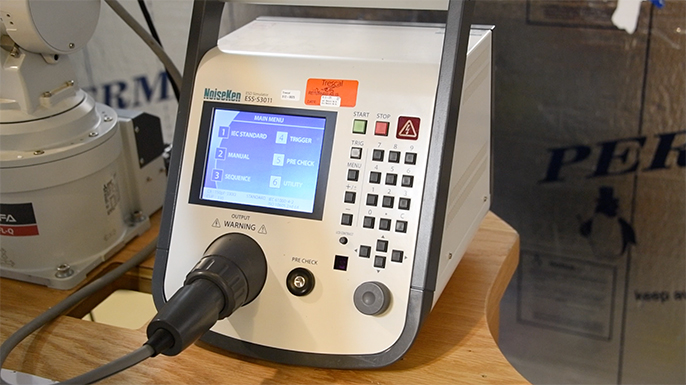
Is there anything you like to add or say to users of noiseken ESS-S3011A & GT-30RA. And the ESD simulators.
There are big changes coming and there may be bigger changes coming to the IEC61000-4-2 standard and in that standard, there are some ideas right now to move the air discharge testing from the mandatory part into an informative part. The argument there is right now the air discharge has no good calibration. The repeatability of air discharge because of the variation of the spark length is kind of large, leading to difficult to reproduce results and that's not easy to happen in a mandatory test when your results don't repeat. But that can all be solved. There are calibrations methods for air discharge that work excellently that we have published on it. We’re just going to cover something in the paper that shows how to stabilize the arc in the ESD testing. So how to get the reproducibility of the air discharge much much much better and there are kind of two corrections to do that. One is to modify the air discharge tip. The tip right now is stainless steel tip which is polished and round. With a small modification to the tip, one can improve the repeatability a lot. The other is we can show that if we use ionizers. If you blow ions at the air discharge location, you will have a better reproducibility of the air discharge . So using the calibration method and modification to the tip and maybe in addition, ionizer, one can show that the air discharge current waveforms repeat much better not perfectly but much better. The results are much more stable. That’s just ongoing research right now.